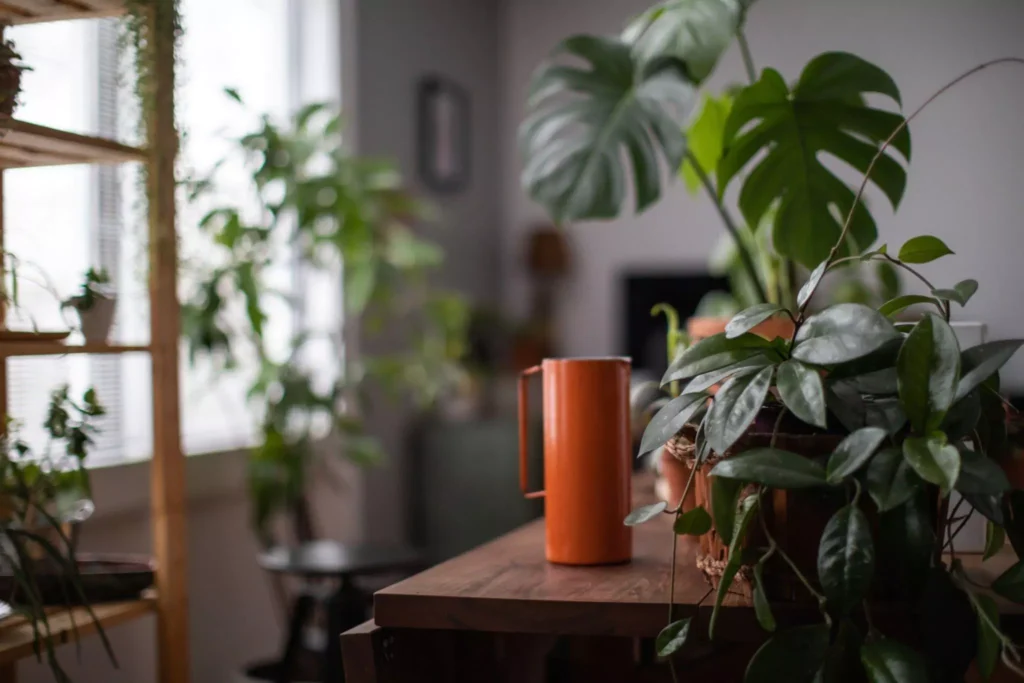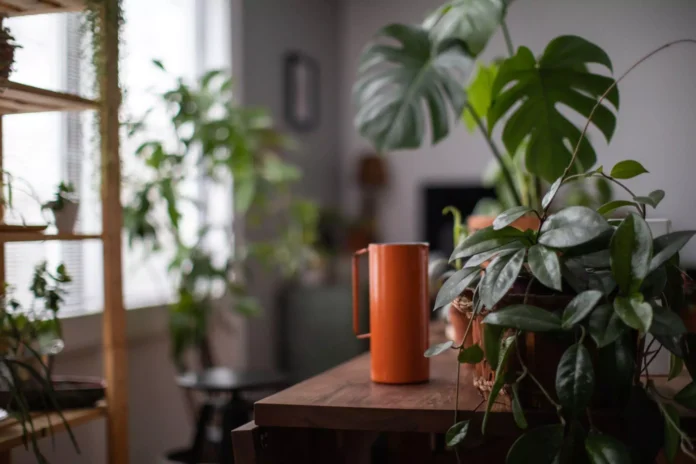Introduction: The Benefits of Low Light Indoor Plants
Having indoor plants in your home not only adds a touch of beauty and nature to your space, but it also offers numerous benefits for your health and well-being. Indoor plants have been proven to improve air quality, reduce stress, boost productivity, and even enhance mood. However, not all homes have access to ample natural light, making it challenging to find suitable plants that can thrive in low light environments. That’s where low light indoor plants come in. These plants are specifically adapted to survive and thrive in areas with minimal sunlight, making them perfect for homes with limited natural light. In this article, we will explore the benefits of low light indoor plants and provide you with a list of 10 plants that will thrive in your home.

How to Choose the Right Indoor Plants for Low Light Environments
A low light environment is typically an area in your home that receives minimal direct sunlight. This could be a room with small windows, a basement, or an area far from any windows. When choosing indoor plants for low light environments, it’s important to consider their light requirements and adaptability to low light conditions.
One tip for choosing the right indoor plants for low light environments is to look for plants that are labeled as “low light” or “low maintenance.” These plants are specifically bred or selected to thrive in areas with minimal sunlight. Another factor to consider is the plant’s natural habitat. Plants that naturally grow in shaded areas or under the canopy of larger trees are more likely to adapt well to low light conditions.
Additionally, it’s important to consider the size and growth habit of the plant. Some low light indoor plants can grow quite large over time, so make sure you have enough space for them to grow without overcrowding your home.
Benefits of Indoor Plants for Your Home and Health
Indoor plants offer numerous benefits for both your home and health. One of the most well-known benefits is their ability to improve air quality. Plants absorb carbon dioxide and release oxygen through the process of photosynthesis, helping to purify the air in your home. They also remove toxins and pollutants from the air, making it cleaner and healthier to breathe.
In addition to improving air quality, indoor plants have been shown to reduce stress and boost mood. Studies have found that being around plants can lower blood pressure, reduce anxiety, and promote feelings of calmness and relaxation. The presence of greenery indoors can also help create a sense of connection to nature, which has been shown to have a positive impact on mental health.
Furthermore, indoor plants can enhance productivity and concentration. Research has found that having plants in the workplace can improve focus, increase productivity, and reduce fatigue. This is especially beneficial for those who work from home or spend long hours indoors.
10 Low Light Indoor Plants That Will Thrive in Your Home
1. Snake Plant: Also known as Sansevieria, the snake plant is a popular choice for low light environments. It has long, upright leaves that are often variegated with shades of green and yellow. Snake plants are known for their ability to purify the air by removing toxins such as formaldehyde and benzene.
2. ZZ Plant: The ZZ plant, or Zamioculcas zamiifolia, is a hardy plant that can tolerate low light conditions. It has glossy, dark green leaves that add a touch of elegance to any space. The ZZ plant is also known for its ability to remove toxins from the air.
3. Pothos: Pothos, or Epipremnum aureum, is a versatile low light indoor plant that can thrive in any room. It has heart-shaped leaves that come in various shades of green and variegated patterns. Pothos is easy to care for and can tolerate low light conditions.
4. Dracaena: Dracaena is a beautiful low light indoor plant that comes in various varieties, including Dracaena marginata and Dracaena fragrans. It has long, arching leaves that can be green, yellow, or variegated. Dracaena plants are known for their air-purifying properties.
5. Peace Lily: The peace lily, or Spathiphyllum, is a popular choice for low light environments due to its ability to thrive in shade. It has dark green leaves and produces elegant white flowers. Peace lilies are also known for their air-purifying qualities.
6. Spider Plant: Spider plants, or Chlorophytum comosum, are easy to care for and can tolerate low light conditions. They have long, arching leaves that are often variegated with shades of green and white. Spider plants are known for their ability to remove toxins from the air.
7. Chinese Evergreen: The Chinese evergreen, or Aglaonema, is a low light indoor plant that comes in various varieties with different leaf patterns and colors. It is known for its ability to tolerate low light conditions and purify the air.
8. Cast Iron Plant: As the name suggests, the cast iron plant, or Aspidistra elatior, is a tough and hardy plant that can tolerate low light conditions. It has dark green leaves that add a touch of elegance to any space.
9. Philodendron: Philodendrons are popular low light indoor plants that come in various varieties, including the heartleaf philodendron and the pothos philodendron. They have heart-shaped leaves that come in shades of green and variegated patterns.
10. Boston Fern: Boston ferns, or Nephrolepis exaltata, are low light indoor plants that add a touch of lushness to any space. They have delicate, feathery fronds that can tolerate low light conditions.
Snake Plant: The Ultimate Low Light Houseplant
The snake plant, also known as Sansevieria, is often considered the ultimate low light houseplant. It is a hardy plant that can tolerate a wide range of light conditions, including low light environments. Snake plants have long, upright leaves that are often variegated with shades of green and yellow. They are known for their ability to purify the air by removing toxins such as formaldehyde and benzene.
Caring for a snake plant in a low light environment is relatively easy. They can tolerate infrequent watering and can even survive in drought-like conditions. Snake plants prefer well-draining soil and should be watered only when the top inch of soil feels dry to the touch. They can also tolerate a wide range of temperatures, making them suitable for various indoor environments.
ZZ Plant: A Hardy, Low Maintenance Plant for Low Light Environments
The ZZ plant, or Zamioculcas zamiifolia, is another excellent choice for low light environments. It is a hardy plant that can tolerate a wide range of light conditions, including low light. The ZZ plant has glossy, dark green leaves that add a touch of elegance to any space.
Caring for a ZZ plant in a low light environment is relatively easy. They prefer well-draining soil and should be watered only when the top inch of soil feels dry to the touch. ZZ plants can tolerate infrequent watering and can even survive in drought-like conditions. They are also relatively pest-resistant and can thrive in various indoor environments.
Pothos: A Versatile Low Light Indoor Plant That Can Thrive in Any Room
Pothos, or Epipremnum aureum, is a versatile low light indoor plant that can thrive in any room. It has heart-shaped leaves that come in various shades of green and variegated patterns. Pothos is known for its ability to tolerate low light conditions and is often recommended for beginners or those with limited natural light.
Caring for a pothos plant in a low light environment is relatively easy. They prefer well-draining soil and should be watered when the top inch of soil feels dry to the touch. Pothos plants can tolerate infrequent watering and can even survive in drought-like conditions. They are also relatively pest-resistant and can thrive in various indoor environments.
Dracaena: A Beautiful, Low Light Indoor Plant That Purifies the Air
Dracaena is a beautiful low light indoor plant that comes in various varieties, including Dracaena marginata and Dracaena fragrans. It has long, arching leaves that can be green, yellow, or variegated. Dracaena plants are known for their air-purifying properties and can remove toxins such as formaldehyde, benzene, and trichloroethylene from the air.
Caring for a dracaena plant in a low light environment is relatively easy. They prefer well-draining soil and should be watered when the top inch of soil feels dry to the touch. Dracaena plants can tolerate infrequent watering and can even survive in drought-like conditions. They are also relatively pest-resistant and can thrive in various indoor environments.
Peace Lily: A Low Light Indoor Plant That Adds a Touch of Elegance to Your Home
The peace lily, or Spathiphyllum, is a low light indoor plant that adds a touch of elegance to any home. It has dark green leaves and produces elegant white flowers. Peace lilies are known for their ability to tolerate low light conditions and are often recommended for beginners or those with limited natural light.
Caring for a peace lily plant in a low light environment is relatively easy. They prefer well-draining soil and should be watered when the top inch of soil feels dry to the touch. Peace lilies can tolerate infrequent watering and can even survive in drought-like conditions. They are also relatively pest-resistant and can thrive in various indoor environments.
Conclusion: Bringing the Jungle Indoors with Low Light Indoor Plants
In conclusion, incorporating low light indoor plants into your home can bring numerous benefits for both your home and health. These plants are specifically adapted to thrive in areas with minimal sunlight, making them perfect for homes with limited natural light. They can improve air quality, reduce stress, boost productivity, and enhance mood.
When choosing low light indoor plants, it’s important to consider their light requirements, adaptability to low light conditions, size, and growth habit. There are numerous low light indoor plants to choose from, including snake plants, ZZ plants, pothos, dracaena, peace lilies, spider plants, Chinese evergreen, cast iron plant, philodendron, and Boston fern.
Caring for low light indoor plants is relatively easy. They prefer well-draining soil and should be watered when the top inch of soil feels dry to the touch. These plants can tolerate infrequent watering and can even survive in drought-like conditions. With proper care and attention, low light indoor plants can thrive and bring a touch of nature and beauty to your home. So why not bring the jungle indoors and enjoy the benefits of low light indoor plants?


